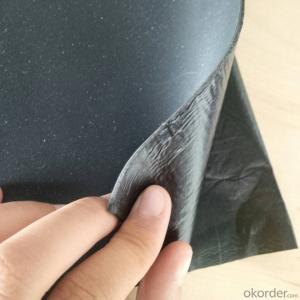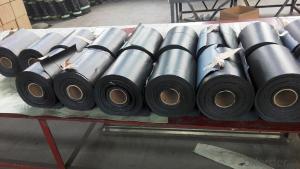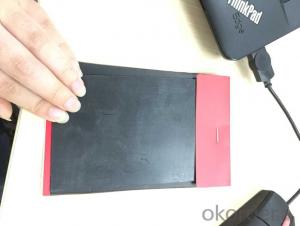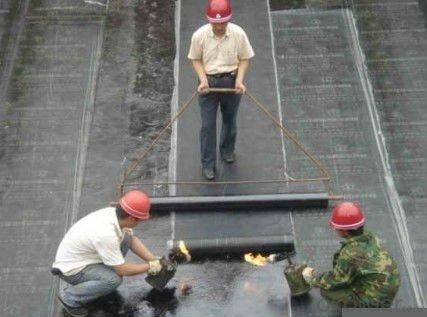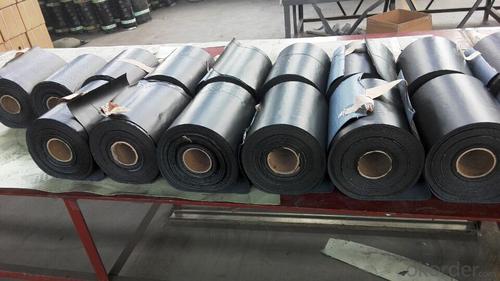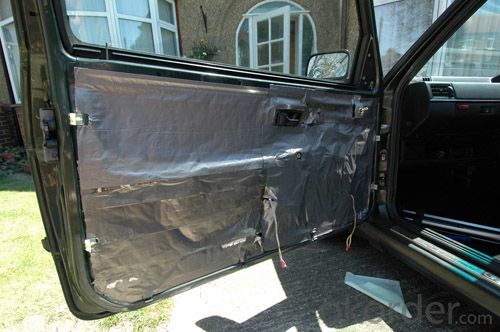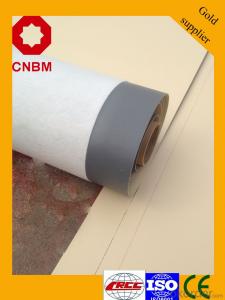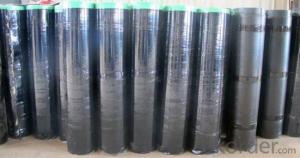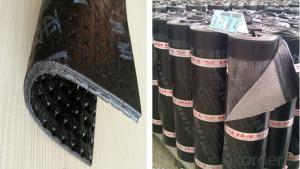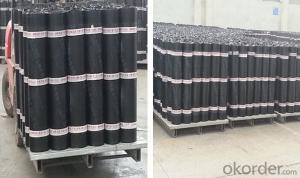SBS Elastomeric Polymer Bitumen Waterproof Roofing Membrane Tpae
- Loading Port:
- Tianjin
- Payment Terms:
- TT OR LC
- Min Order Qty:
- 5000 m²
- Supply Capability:
- 100000 m²/month
OKorder Service Pledge
OKorder Financial Service
You Might Also Like
Quick DetailsType:
Waterproof Membrane, Waterproof membrane Place of Origin: China (Mainland)
Surface film: PE, SAND, SCHIST,aluminum Thickness: 2.0mm~5.0mm Length: 10.0m
Width: 1.0m Usage: waterproofing for roof, understand,etc
Packaging & DeliveryPackaging Details: 10 sq.m./roll export package or as requirment
Delivery Detail: 15 days after receipt of deposit.
Specifications3mm SBS modified bitumen waterproof membrane
1) 2--5mm
2) Base:PY/G
3) Surface:PE / S / M / Al
Application:
1. Make sure the base surface smooth, clean and dry(Moisture<9%), then paint the delicated agent on the base surface. start application till it is dry.< span="">
2. Application Method:
Heating the bottom surface of membrane and the roof deck surface by flam spray gun or other suitable appliances till the asphalt start to melt(not flowing), then spread. Using roller to compact the membrane so that it can firmly adhere to the base surface. The overlap on the long side should be 100mm and the short side should be 150mm.
3. After application, a careful inspection is required. Make sure there is no air bubble, no fold, no falling away etc to guarantee the waterproof life.
Package
the membrane is launched into the market in rolls 1m wide and 10m long.
Storage Conditions and Service life
Rolls must be vertically stored in roofed-over spaces. If the rolls have to be stored outdoors for a long period of time, then they must be covered with a protective layer in order to protect them against the sunlight. If the rolls are to be stowed without pallets, they they are not stacked one on top of another. In palletised stowage, two rows may be stacked one on top of the other.
Attentions for Construction
·
SBS / APP asphalt waterproof membrane, bituminous waterproof membrane
1. Membranes should be stored under dry and ventilated conditions.
2. Different types of membranes must be piled separately.
3. Under usual condition, storage period is one year since production date.
4. Membrane roll should be put vertically during transportation. It should be kept away
from sunshine and rainwater.
Installation Sketch point
Clean the substrate using broom or high pressure dusty cleaner.
Apply primer
Heat the membrane bottom using a high temperature flame gun.
Push forward while the primer and membrane oil melted
Use a roller to push hard the membrane surface to ensure it stick firmly
Why choose us?
1,Honest supplier to the worldwide buyers
2,Factory, direct supplier, competitive price
3,Know how to control the costing with 30 years experience
4,Warm and friendly service and guide
5,China National Standard GB/18242-2008
6,3 shifts workers for 24hrs production, high capacity
7,Small and big orders are welcome from the worldwide
8, 24 hours service for you
FAQ
1,Q:Are you a factory or trading company?
A:We are a factory
2,Q:Where is your factory located?How can i visit there?
A:Our factory is located in Zhengzhou City,Henan Province,China,about 2 hours plane from Shanghai,Guangzhou ect.We can pick you up at the airport.All our clients,from home or abroad,are warmly welcome to visit us!
3,Q:How can i get some samples?
A:We are honored to offer you Free samples.
4:Q:How does your factory do regarding quality control?
A:Quality is priority.King Waterproof Material people always attach great importance to quality controlling from the every beginning to the very end.Our factory has gain ISO9001:2008,ISO4001:2000 ,CEC And LANxess Testing
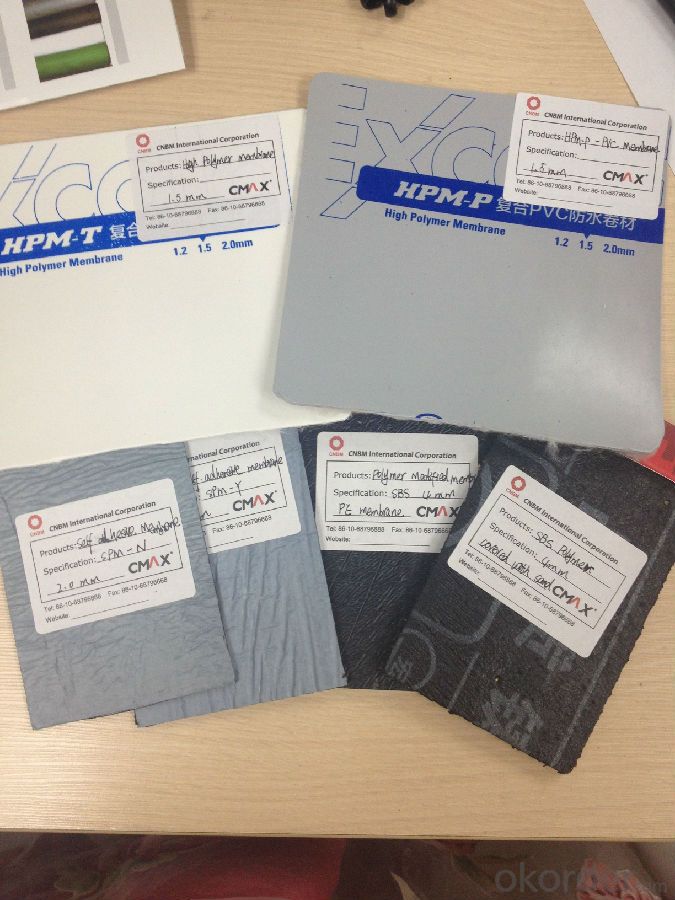
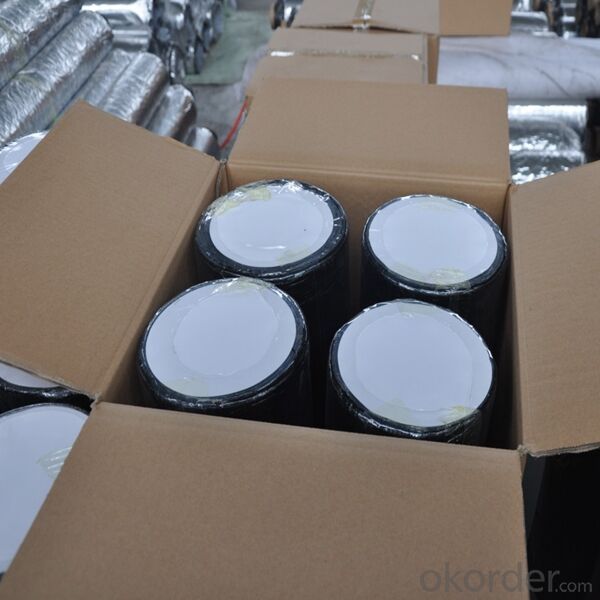
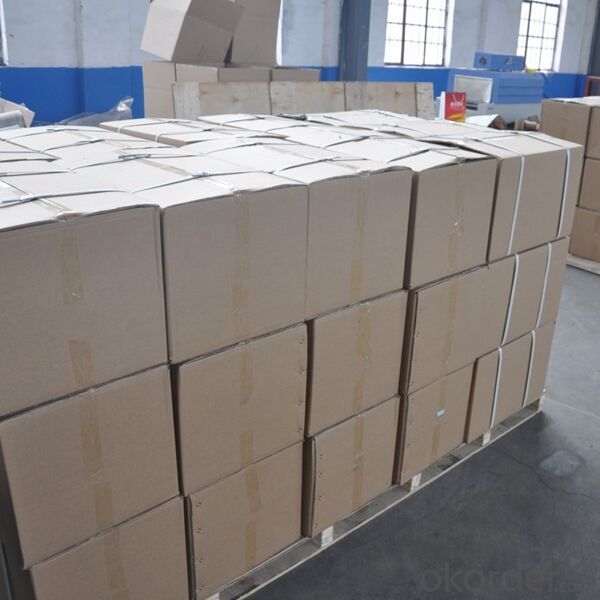
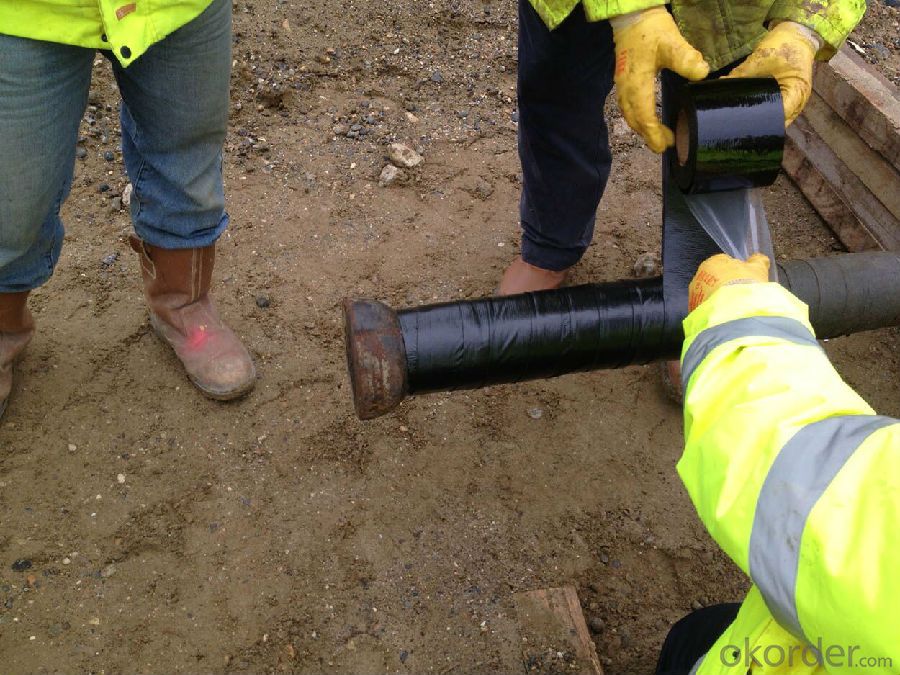
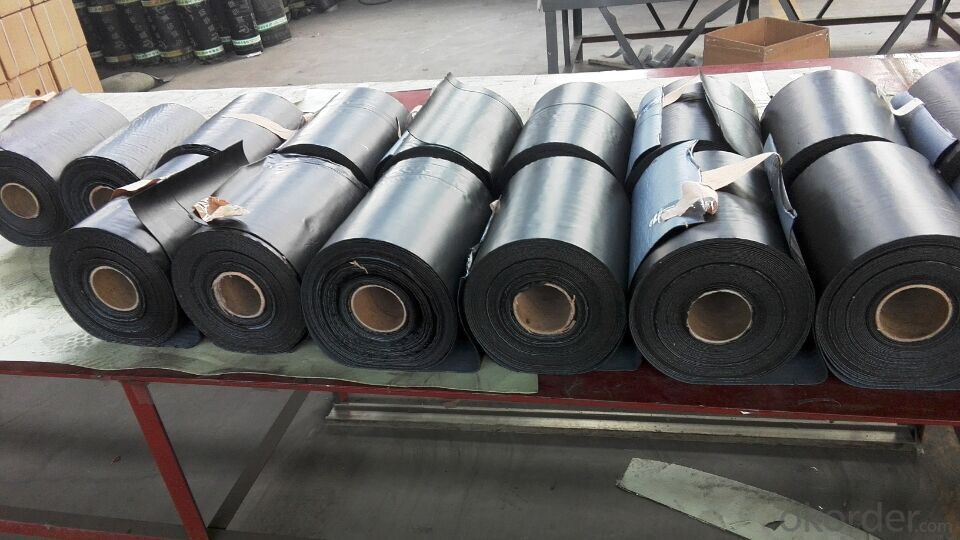
- Q: Is a waterproofing membrane necessary for all types of construction?
- No, a waterproofing membrane is not necessary for all types of construction. It primarily depends on the location, purpose, and materials used in the construction project. While waterproofing membranes are essential for structures like basements, swimming pools, or buildings in areas prone to heavy rainfall or moisture, they may not be required for every type of construction. Factors such as climate, building design, and intended use should be considered to determine the necessity of a waterproofing membrane.
- Q: Can a waterproofing membrane be used on EPDM roofs?
- Yes, a waterproofing membrane can be used on EPDM roofs. EPDM (ethylene propylene diene terpolymer) is a highly durable and flexible synthetic rubber roofing material commonly used for low-slope and flat roofs. While EPDM roofs are already waterproof, applying an additional waterproofing membrane can provide an extra layer of protection and enhance the roof's longevity. The waterproofing membrane can act as a barrier against water infiltration, preventing leaks and moisture damage. However, it is important to ensure that the waterproofing membrane is compatible with EPDM and follows the manufacturer's guidelines for installation to maintain the roof's integrity.
- Q: Can a waterproofing membrane be used in saunas?
- Indeed, a sauna can utilize a waterproofing membrane. Given that saunas consist of environments abundant in moisture, implementing a waterproofing membrane can effectively avert water damage and shield the underlying structure against moisture infiltration. The membrane functions as a barrier, effectively impeding the permeation of water and mitigating potential complications like mold growth, mildew formation, and rot. The selection of a waterproofing membrane specifically engineered for high-moisture regions, capable of withstanding the intense heat and humidity characteristic of saunas, is of utmost importance. Additionally, proper installation and adherence to manufacturer guidelines are essential to guarantee the efficiency and durability of the waterproofing membrane within a sauna setting.
- Q: Can a waterproofing membrane be used on precast plastic surfaces?
- Precast plastic surfaces can indeed benefit from the use of a waterproofing membrane. These membranes serve the purpose of establishing a shield against moisture and can be utilized on various surfaces such as concrete, metal, and plastic. By correctly implementing a waterproofing membrane, water infiltration is prevented, thus guaranteeing the long-lasting and resilient nature of the precast plastic surface. To ensure proper adhesion and effectiveness, it is crucial to select a waterproofing membrane that is compatible with plastic and adhere to the guidelines provided by the manufacturer during application.
- Q: Are waterproofing membranes suitable for commercial applications?
- Yes, waterproofing membranes are suitable for commercial applications. They are designed to provide a protective barrier against water infiltration, making them ideal for use in commercial buildings such as offices, retail spaces, and warehouses. Waterproofing membranes are durable, long-lasting, and can be applied to various types of surfaces, ensuring the integrity and longevity of commercial structures.
- Q: Can a waterproofing membrane be used on modified bitumen roofs?
- Yes, a waterproofing membrane can be used on modified bitumen roofs. In fact, it is a common practice to enhance the waterproofing capabilities of modified bitumen roofs by applying a separate waterproofing membrane on top. This additional layer provides an extra barrier against water infiltration and helps prolong the lifespan of the roof.
- Q: How does a waterproofing membrane handle water pressure from below?
- A waterproofing membrane is designed to handle water pressure from below by creating a barrier that prevents water from penetrating through it. The membrane acts as a protective layer, preventing water from seeping into the structure or area that it is applied to. The membrane is typically made from materials such as rubber, PVC, or bitumen, which have excellent water-resistant properties. These materials are flexible and can stretch to accommodate movement in the structure, ensuring that the membrane remains intact even under dynamic conditions. When water pressure from below is applied, the waterproofing membrane resists the force exerted by the water and prevents it from entering the structure. The membrane is installed in such a way that it covers the entire area that needs protection, ensuring a seamless and continuous barrier against water intrusion. Furthermore, waterproofing membranes often have additional features, such as reinforcement layers or fabric backings, which enhance their strength and durability. These features help the membrane withstand higher water pressures and minimize the risk of leaks or water damage. It is important to note that the effectiveness of a waterproofing membrane in handling water pressure from below depends on various factors, such as the quality of the membrane, proper installation techniques, and the specific conditions of the site. Adequate surface preparation, correct membrane application, and regular maintenance are essential to ensure the long-term performance of the waterproofing system. Overall, a waterproofing membrane is designed to handle water pressure from below by creating a robust barrier that prevents water ingress, protecting the structure or area from potential water damage.
- Q: Can a waterproofing membrane be used for loading docks?
- Loading docks can benefit greatly from the use of waterproofing membranes. These membranes are commonly employed in various construction applications to safeguard underlying structures against moisture and water damage. Given the high levels of foot and vehicle traffic loading docks experience, along with the potential for water infiltration, installing a waterproofing membrane is highly recommended. By creating a barrier against water intrusion, a waterproofing membrane prevents moisture from seeping into the loading dock area. This is particularly crucial because moisture can compromise the structural integrity of the dock, leading to potential damage and safety hazards. With the installation of a waterproofing membrane, loading docks can be shielded from water-related issues such as corrosion, mold, and deterioration. Moreover, certain waterproofing membranes offer additional advantages beyond water protection. Some have anti-slip properties or resistance to chemicals and oils, which can be advantageous in a loading dock environment. These added features enhance the safety and durability of the loading dock, making it more suitable for heavy loads and frequent use. When selecting a waterproofing membrane for loading docks, it is important to consider the specific requirements and conditions of the dock area. Factors such as the type of traffic, load capacity, and exposure to harsh environments should be evaluated to ensure the chosen membrane is suitable for its intended use. In conclusion, a waterproofing membrane is an effective solution for protecting loading docks against water damage, enhancing safety, and prolonging the lifespan of the structure.
- Q: Does a waterproofing membrane have any fire resistance properties?
- No, a waterproofing membrane typically does not have any inherent fire resistance properties. Its primary function is to prevent water penetration, and it is not designed to provide fire protection.
- Q: Can a waterproofing membrane be used on tunnels?
- Tunnels, being exposed to high moisture levels, groundwater infiltration, and potential leaks, necessitate the use of a waterproofing membrane. This is crucial for safeguarding their long-term structural integrity and preventing water damage. In tunnel construction, waterproofing membranes are widely employed as they effectively prevent water penetration and act as a reliable moisture barrier. These membranes are specifically designed to be durable, flexible, and resistant to different environmental conditions, making them suitable for tunnel application. By applying these membranes to the tunnel walls, roof, and floor, a waterproof seal is created, ensuring the tunnel remains dry and protected against issues such as corrosion, deterioration, and mold growth caused by water. Moreover, the use of waterproofing membranes not only helps reduce maintenance costs but also extends the lifespan of the tunnel infrastructure.
Send your message to us
SBS Elastomeric Polymer Bitumen Waterproof Roofing Membrane Tpae
- Loading Port:
- Tianjin
- Payment Terms:
- TT OR LC
- Min Order Qty:
- 5000 m²
- Supply Capability:
- 100000 m²/month
OKorder Service Pledge
OKorder Financial Service
Similar products
Hot products
Hot Searches
Related keywords
